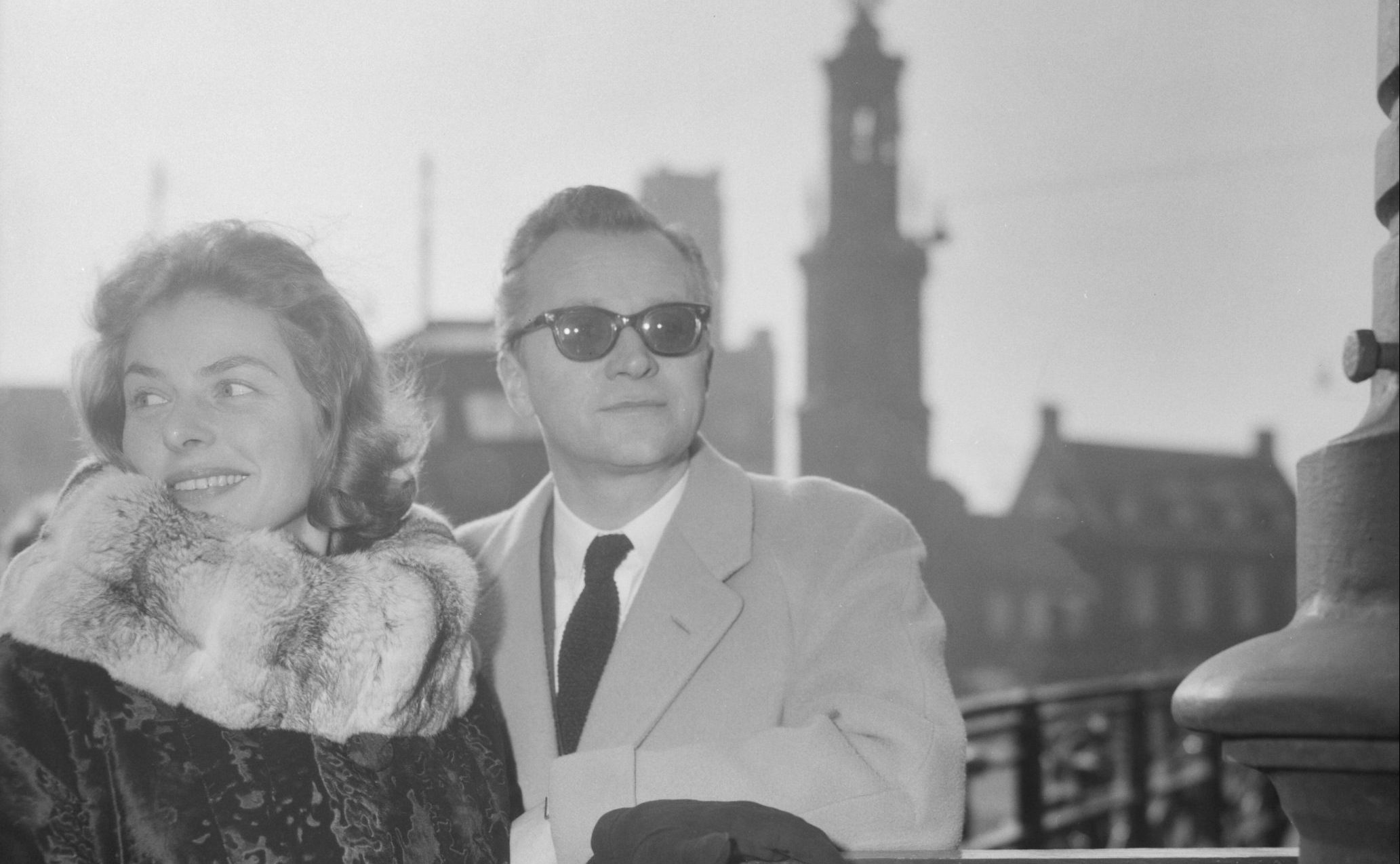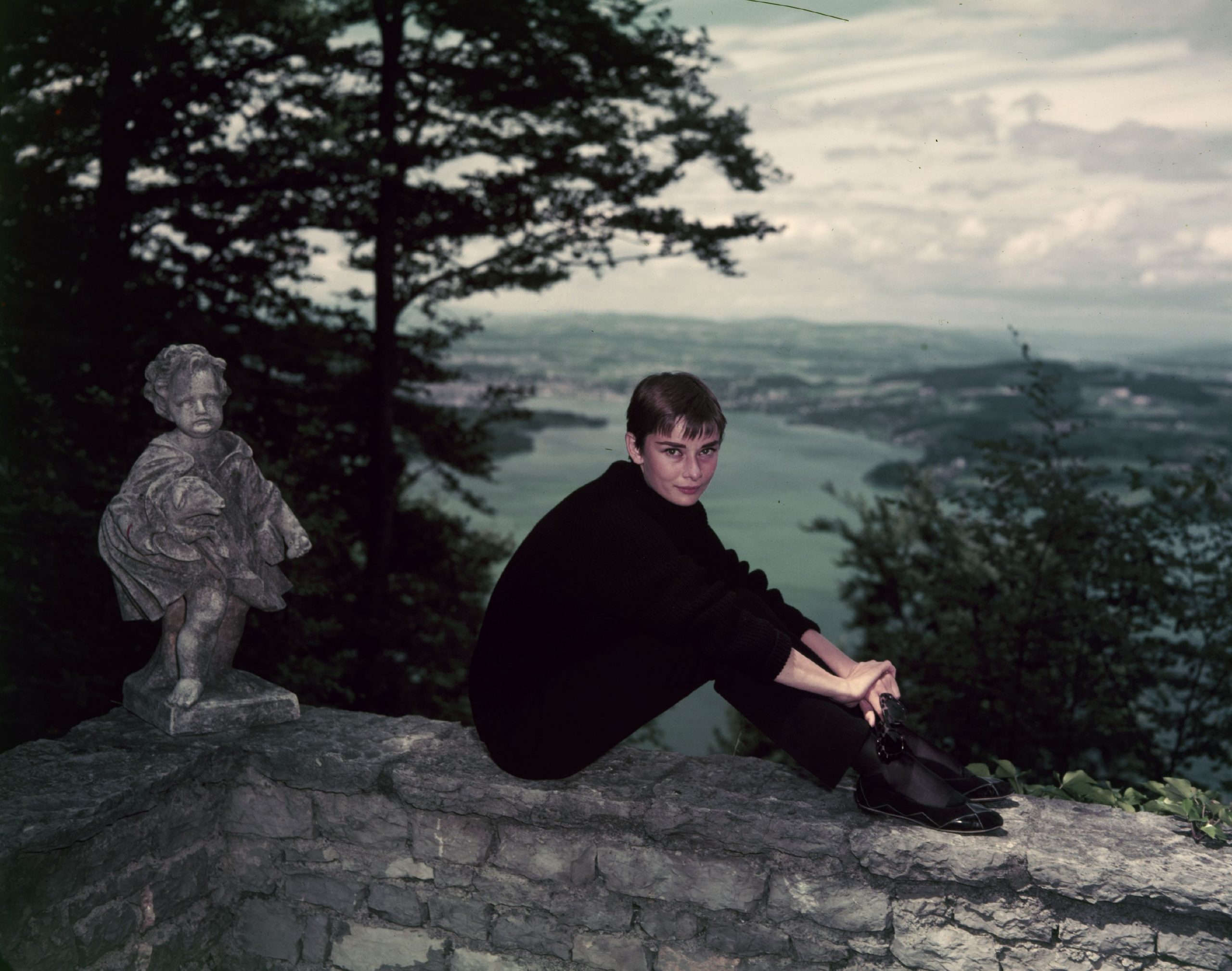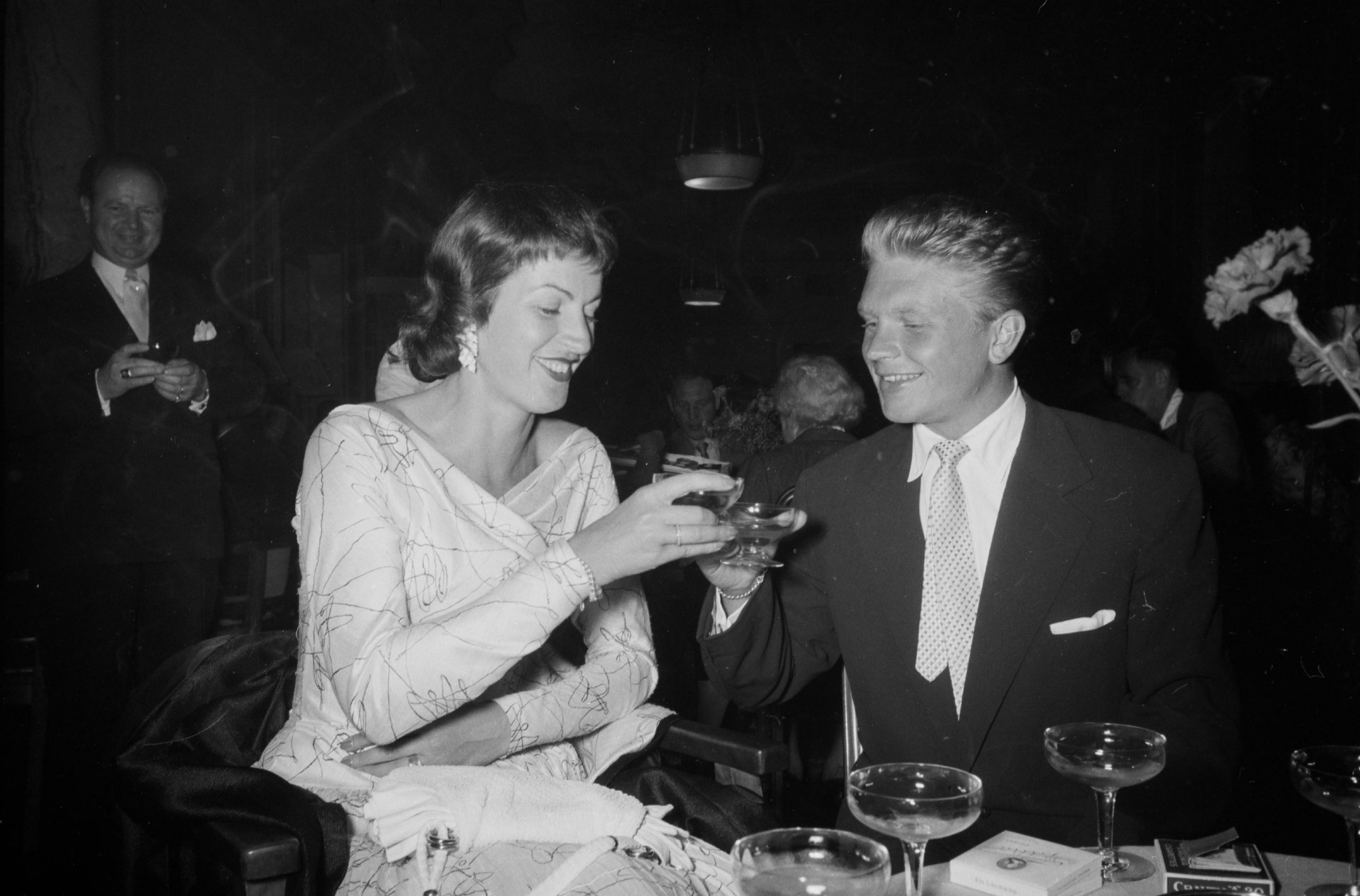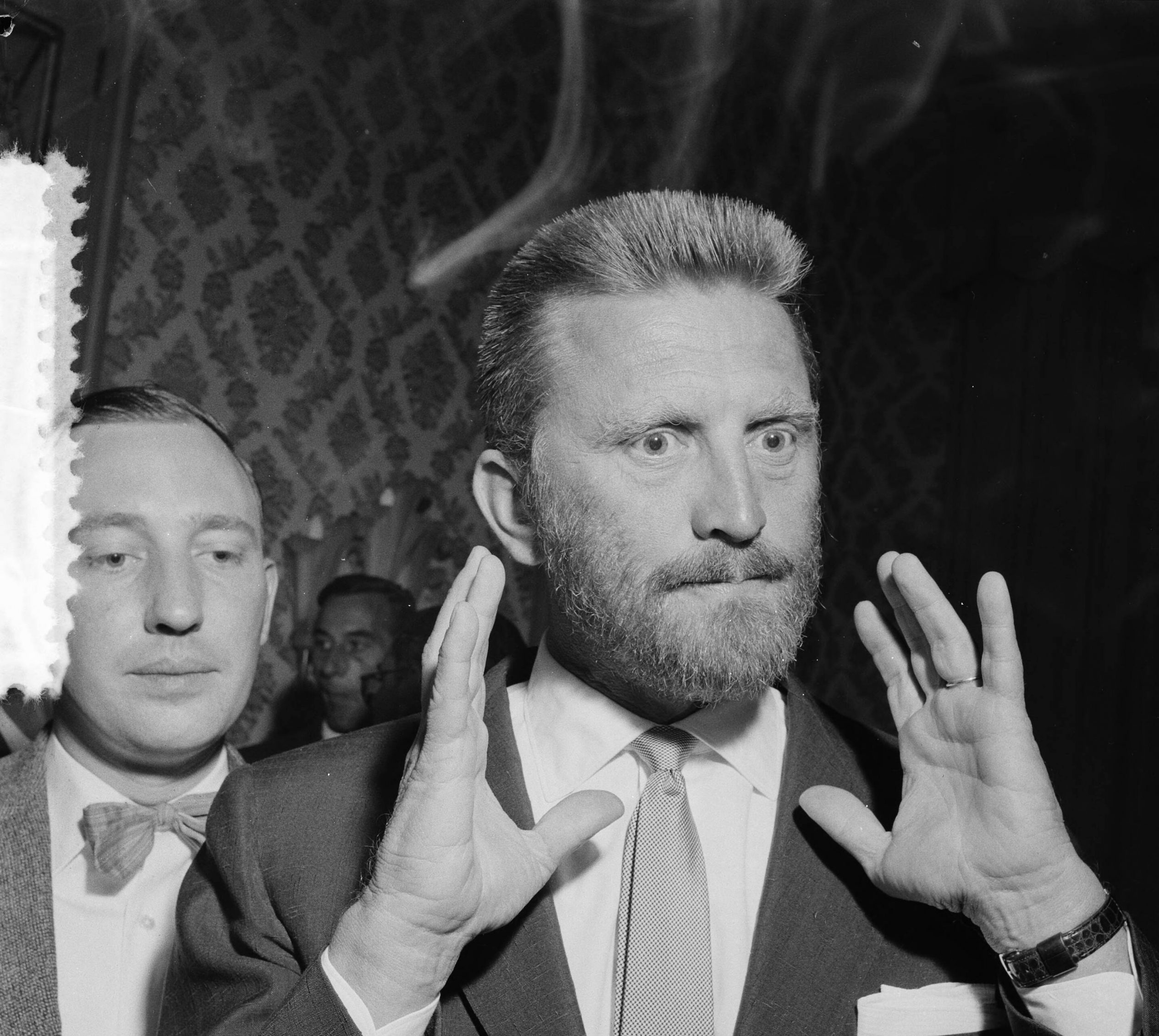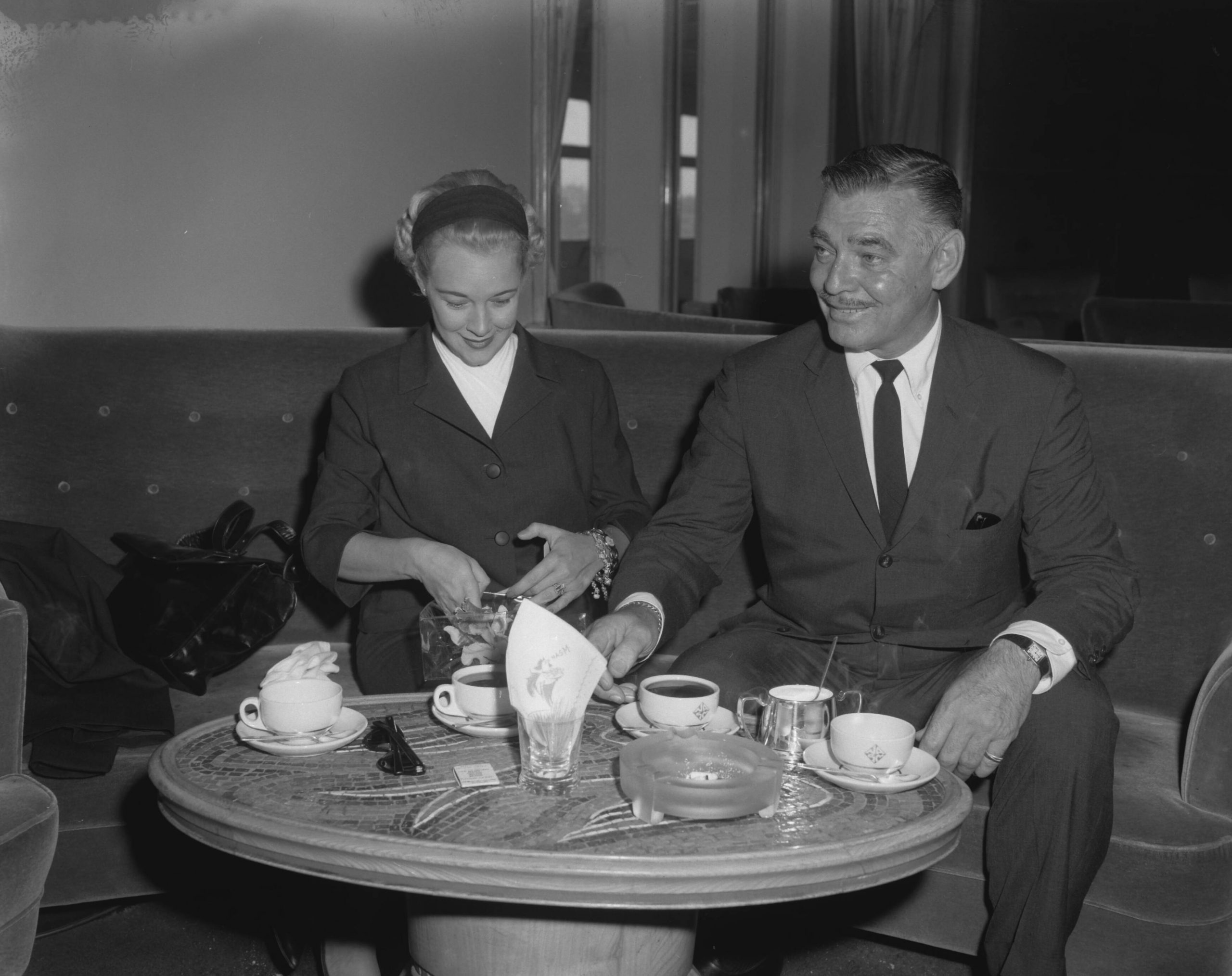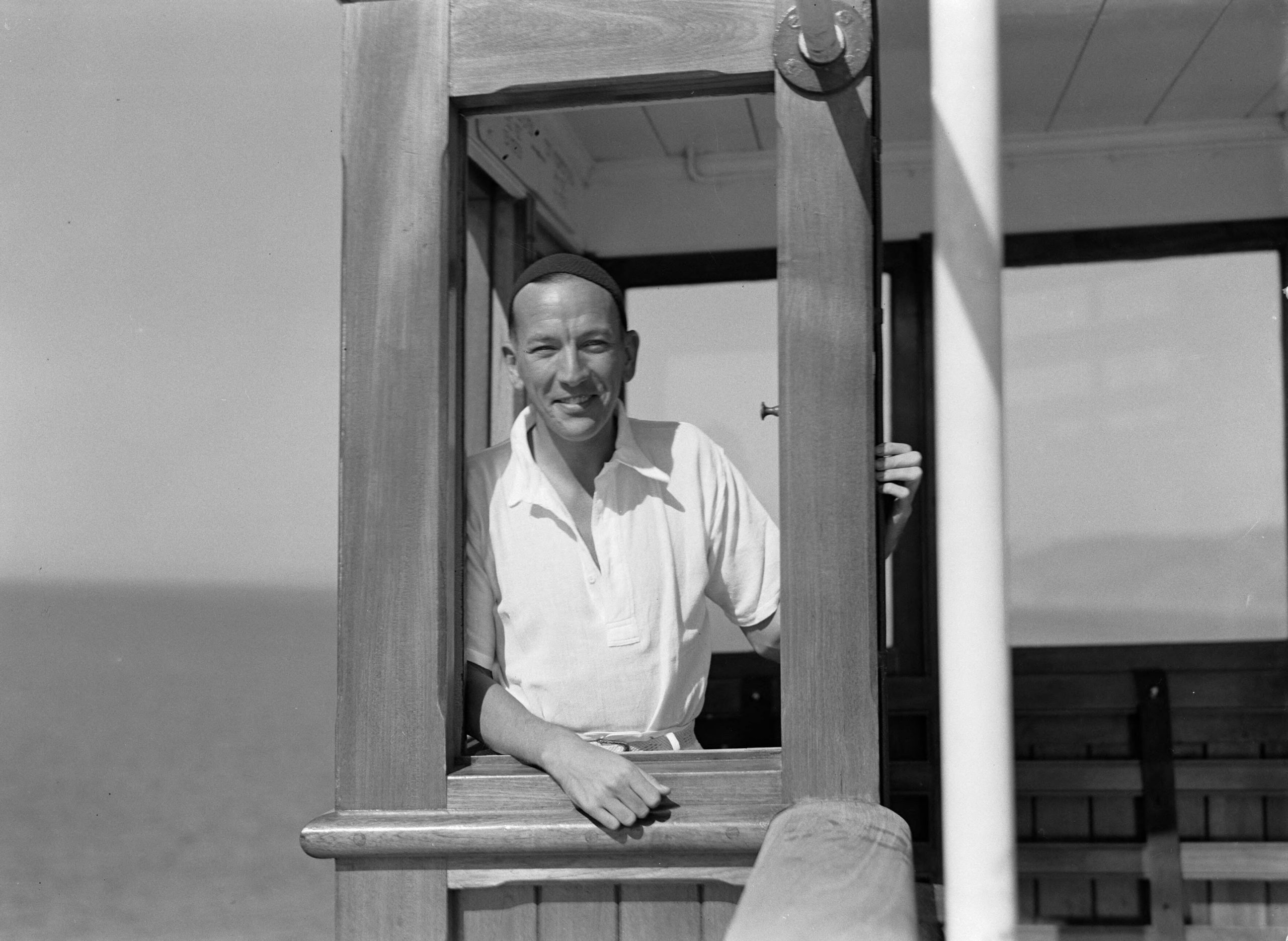Continued from part one
In the early fifties, Christopher Lee realised that he did not live up to the image of the typical British gentleman enough to become a British icon. Instead, he set his sights on becoming an international phenomenon. He calculated that this would be his only opportunity to succeed as an actor.
At that time, Christopher Lee accepted any role that was offered to him: Although it became apparent that his roles were getting bigger, he still remained unnamed in the majority of his roles. In addition, he regularly tried to get theatre roles, but he only succeeded rarely and mostly in insignificant roles.
Frankenstein
In 1955, Christopher Lee starred alongside Olivia de Havilland in That Lady, directed by Terence Young.
By the age of 35 at the latest, all the men in his family had made it to high-ranking positions such as colonels, cardinals, ambassadors or chairmen, he writes in his memoirs. Except him. In his acting career, which had now lasted ten years, he had learned and experienced a lot, but still had not left a lasting impression.
When his agent informed him in the late fifties that Hammer Studios was planning a remake of the horror classic The Curse of Frankenstein (1957) and that they did not yet have a cast for the role of the creature, Lee initially took this as an insult. But when Lee realised the potential for success of this remake, he became interested in the project. After meeting with the producer and director, he was given the role of the Creature – it was the first time in his career that his height had benefited him.
From now on he had a name as an actor, a fan club and could afford a used car.
Dracula forever?
The Curse of Frankenstein was the beginning of a long collaboration between Christopher Lee and Hammer Studios. From then on, Lee had a lifelong friendship with Peter Cushing, who played the role of Baron Viktor Frankenstein in The Curse of Frankenstein. His convincing performance of the creature predestined Lee for upcoming horror film productions.
In 1958, Christopher Lee was finally able to celebrate his breakthrough as an actor: In Dracula (1958), Christopher Lee played the title role in a film for the first time in his life. The film was a remake of the 1931 first film version of the classic with Bela Lugosi in the leading role.
Lee initially refused to watch the first film adaptation in order not to be influenced: He wanted to create his own interpretation of the role.
Dracula was the film that changed a lot for Christopher Lee: from now on he had a name as an actor, a fan club and could afford a used car.
German productions
As Christopher Lee approached 40, his family accepted the fact that he was unlikely to change careers and become a diplomat. The positions were clear in his family: his mother never supported Lee one hundred percent in pursuing a career in acting – not even when he was celebrating his greatest successes.
In the sixties, Christopher Lee starred in German Edgar Wallace adaptations, in Das Rätsel der roten Orchidee [The Riddle of the Red Orchid, 1962] he played the leading role. Lee later emphasised that one of the reasons he mastered the German language was because he had a personal fascination with Richard Wagner.
In the German production Sherlock Holmes und das Halsband des Todes [Sherlock Holmes and the Necklace of Death, 1962] Christopher Lee played the role of Sherlock Holmes. The role of Dracula was a part Christopher Lee took on again and again over the years: Until 1973, he played the role of Dracula a total of seven times for Hammer Studios.
Ian Fleming
No actor is comfortable doing nothing and resting for a while, writes Christopher Lee in his memoirs: the fact that James Bond creator Ian Fleming was his cousin may have helped him land his next success as an actor.
A few years earlier, Fleming is said to have asked his cousin Lee if he would like to take on the role of Dr. No in the first James Bond film. Lee could hardly refuse this offer – but Fleming had no influence on the casting decisions of the Bond films. Just as Fleming could not manage to get David Niven cast as James Bond, Lee was not given the role of the first James Bond villain. The producers had their own ideas to make the James Bond franchise a big success.
“Audiences like a cultivated air in a killer.”
Christopher Lee in his memoirs
The Man with the Golden Gun
For ten years Christopher Lee thought he had missed his chance to be part of the James Bond universe forever: Not least because Ian Fleming had died in the meantime, he didn’t have any further hopes.
But in the early 1970s, Guy Hamilton, the director of the James Bond film The Man with the Golden Gun (1974), offered him the role of Bond’s antagonist Francisco Scaramanga. Whether the fact that Fleming was Lee’s cousin played a role in the end is impossible to say. What is certain, however, is that Christopher Lee needed this role to change his image: It was only with the role of Francisco Scaramanga that he was able to free himself from the endless loop of constantly having to play the role of Dracula.
The Man with the Golden Gun was like a reward for Christopher Lee for the years in which he had led an existence on the edge of insignificance as an actor: a role in this film meant guaranteed success across the board. For anyone who starred in James Bond, it was a self-evident fact to call himself world-famous.
“Audiences like a cultivated air in a killer.” – true to this motto, Christopher Lee played the role of Francisco Scaramanga.
“The cultivated killer“
The cultivated aura was not originally part of the character of the Bond antagonist in The Man with the Golden Gun: the “cultivated killer” Scaramanga was never intended by Ian Fleming and virtually written for Christopher Lee.
A few roles in Hollywood followed in the seventies and eighties, but Christopher Lee never really warmed up with the American capital of the film industry: in his memoirs, he stresses that he is a European after all and returned to his roots after a few films.
Christopher Lee described his role of Muhammad Ali Jinnah in Jinnah (1998) as the most important film role of his life: the plot revolves around the founder of Pakistan, Muhammad Ali Jinnah. Lee later recalled that the film, which had a limited budget and was subject to more than one boycott attempt, had taken on the traits of a monumental production. The film flopped at the box office, but that did not bother Christopher Lee at all: the film was about immortalising the fate of Jinnah. Like Alec Guinness, Lee was able to play roles that belonged to a different ethnic group than himself.
Legacy
It was always Christopher Lee’s goal to free himself from the constraint of only being able to play one role: For him, the thought of playing only the role of the villain or even Dracula was unbearable. He initially led an acting career for over ten years in which nothing happened at all – in retrospect, however, this was a very instructive time for him, which can be seen as the foundation for his later success.
In his later years, he became known to young cinema audiences primarily through his embodiment of Count Dooku in the prequel film adaptations of the Star Wars series: The lure of playing the role of the villain was obviously something Christopher Lee could never quite resist.
Main source: Lee, Christopher: “Tall, Dark and Gruesome”, 1999 Midnight Marquee Press
Cover picture: © Simon von Ludwig

 Deutsch
Deutsch



